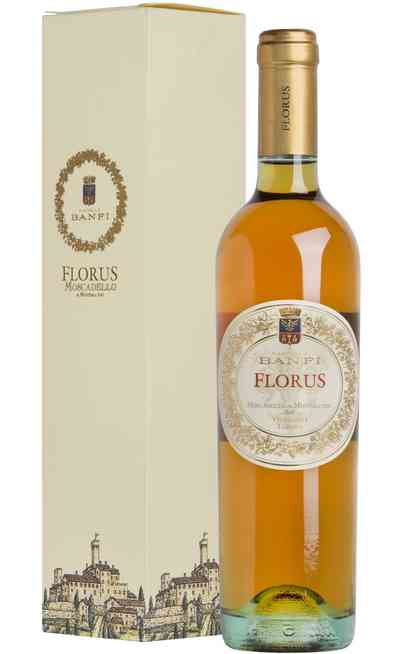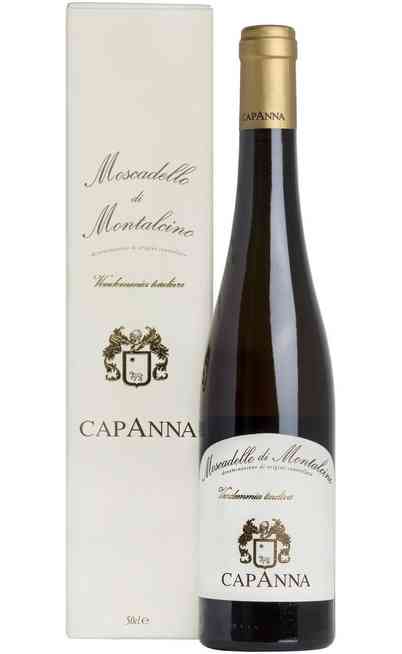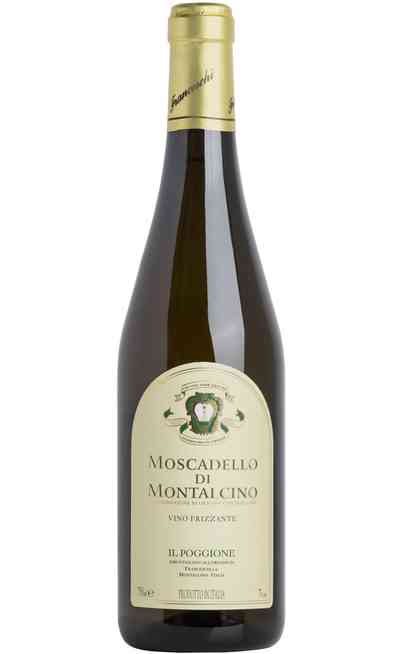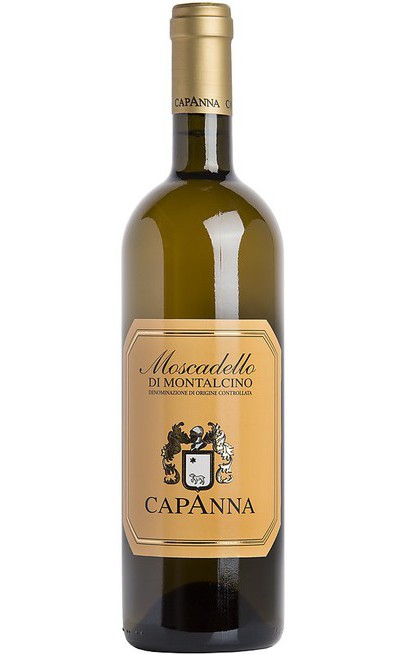
General description of wine and territory Moscadello
The precious white wine Moscadello di Montalcino DOC is one of the 39 Denominations of Controlled Origin. This Tuscan wine is produced in a very small area of the province of Siena. The production area of Moscato Bianco grapes, indispensable for the production of Moscadello di Montalcino DOC, includes the entire administrative territory of the municipality of Montalcino in the province of Siena.In addition to some small plot of land immediately in contact with the territory of Montalcino.
The town of Montalcino has been known for centuries as the homeland of Moscadello. There are historical records dating back to the 15th century. In 1540, in a letter sent from Venice to a friend, the writer Pietro Aretino praised him for the gift of a 'ldquo;caratello of precious, delicate Moscadello, Tondo (cit. tondotto/rotondo), leggiero, and that sparkling iscarico (lively) That seems to blame, bites and draws of calcium, words that parrebbon thirst in sù the lips ...”. Some documents of the Vatican archives dating back to 1591, show that in the estates owned by the Abbey of Sant'Antimo sharecroppers produced Moscadello; Pope Urban VIII, in the first decades of the seventeenth century, appreciated him for his gallantry and tasty & rdquo; and with great discretion & ldquo;solea often request it for sé and for his Corte”. In the travel books and in the stories of the famous travelers of the seventeenth, eighteenth and nineteenth centuries, there was never a mention with praise of Moscadello di Montalcino “, among the rarest and most renowned wines of Toscana”.
Very well known is the quote of Francesco Redi, the doctor and poet from Arezzo, a man of refined qualities and distinguished scientist, who composed in 1685 the “Bacchus in Toscana”, in honor of the best wines of his land on the joyful footsteps of the old Hellenic dithirambi. Which, about Moscadello di Montalcino decantava: “Del leggiadretto / del sì divino / Moscadelletto / Montalcino”.
A lot of historical information about well-known people testifies to the appreciation of Moscadello. First of all, the great poet Ugo Foscolo: in the Florentine sojourn on the bright hill of Bellosguardo (1812-1813), in the most dramatic period of his life, amid economic hardships, suspicions of anti-proletarian activities and friction with Milanese literary circles, Foscolo was comforted by his literary efforts with a good glass of Moscadello di Montalcino, which he proudly offered to his friends.
Similar wines produced with the same grapes as Moscadello
The grapes used for the production of Moscadello di Montalcino DOC, a Tuscan wine that was once appreciated by Ugo Foscolo, follow specific rules laid down by the production disciplinary. The wine with a registered designation of origin “Moscadello di Montalcino DOC” must be obtained from grapes from vineyards grown within the area identified by the disciplinary, from the grape variety “Moscato Bianco”. This wine can also be produced with grapes from white grapes, suitable for cultivation in the Tuscany Region up to a maximum of 15%.
The Muscat white grape is an aromatic grape widespread in almost all the Italian peninsula and for this reason it represents one of the most important vines for planting area. Â It belongs to the family of Moscati, aromatic vines whose name derives from "muscum", musk, whose characteristic aroma is found in grapes and which probably corresponds to the "anathelicon moschaton" of the Greeks or Apiana grape of ancient Rome. It corresponds to the French grape "Muscat & agrave; petit grains": the French term "musqué" is correctly translated as "aromatic". Moscato bianco has many synonyms, mostly in reference to the wines that are produced or the production areas. The main ones are Moscadello di Montalcino, Moscato di Canelli, Moscato di Trani, Moscato d'Asti, Moscato di Siracusa, Moscato di Sorso Sennori, Weisser Muskateller in Alto Adige.
The varietal characteristics of the magnificent and historic vineyard “Moscato bianco” of Tuscany has specific varietal characteristics. The leaf is of medium size with pentagonal shape, bright green herbaceous but opaque, not glossy. The bunch is also of medium size, has the cylindrical shape tending to the pyramidal thanks to the small wing in the upper part, the overall consistency of the bunch is variable from compact to seeds & ndash; spargolo. The medium size berry tends if well exposed to the sun to grow in size and become medium – large, the shape is spheroidal or slightly flattened, The skin is finally thin, yellow color tending to green especially in the portion exposed to the sun where it even tends to golden when the exposure is prolonged. The surface is slightly pruinose and the pulp has the characteristic sweet and aromatic taste. The production characteristics require that the Muscat white vine has good and constant production and tolerates summer drought well. The ripe grape has a very marked sweetness and therefore is subject to attracting wasps and other insects. The cultivation and breeding technique wants the white Muscat vine to adapt to farming systems not too expanded and with rich or frequent pruning.
It should also be noted that the wine with denomination of controlled origin “Moscadello di Montalcino” can be produced in three different types “Tranquillo”, “Frizzante” and “Vendemmia Tardiva”under the conditions laid down in this specification. The wine to DOC “Moscadello di Montalcino” qualified “Harvest Late & rdquo; must be subjected to a period of aging of at least one year, calculated by 1° January of the year following the harvest and can not be released for consumption before 1° January of the second year after the harvest. During the aging the wine can make a slow fermentation that is attenuated in the cold months.
Analysis of Moscadello Tuscan wine
The wines that have the certification of Controlled Origin DOC called “Moscadello di Montalcino” When released for consumption, they must meet precisely certain characteristics that set the same production specification, separating them between the different types.
For the type “Tranquillo” you must have a straw yellow color, the smell must be characteristic, delicate, fresh and persistent. The taste is always aromatic, sweet, harmonious, characteristic of muscat grapes.
Per la Tipologia di Moscatello di Montalcino DOC Tipologia “Frizzante” si ha un colore giallo paglierino tenue, con spuma fine e vivace. Il sentore olfattivo è caratteristico, delicato, fresco e persistente. The taste is aromatic, sweet, harmonious, characteristic of muscat grapes and deeply round.
For the Moscatello di Montalcino DOC Type & ldquo;Sparkling & rdquo; it has a pale straw yellow color, with a fine and lively foam. The aroma is characteristic, delicate, fresh and persistent. The taste is aromatic, sweet, harmonious, characteristic of muscat grapes and deeply round.
The type “Late Harvest & rdquo; has a color that varies and stands out for the reflections that from straw yellow to golden yellow, which intensifies depending on aging. The smell is characteristic, delicate and persistent. The taste is aromatic, sweet and harmonious.
Recommended pairing with white wine Moscadello
Finds its natural location at the end of a meal, pleasantly accompanying pastries and dry desserts. In the versions firm and sparkling only if young it goes well with the fruit especially if very sweet, such as pears and exotic fruit. Service temperature is 10 degrees Celsius rising to 12 degrees in older wound. The most suitable glass is the small tulip but also lends itself well the “Sautern” suitable for botrytized wines that need to concentrate in the small mug all the scents.








